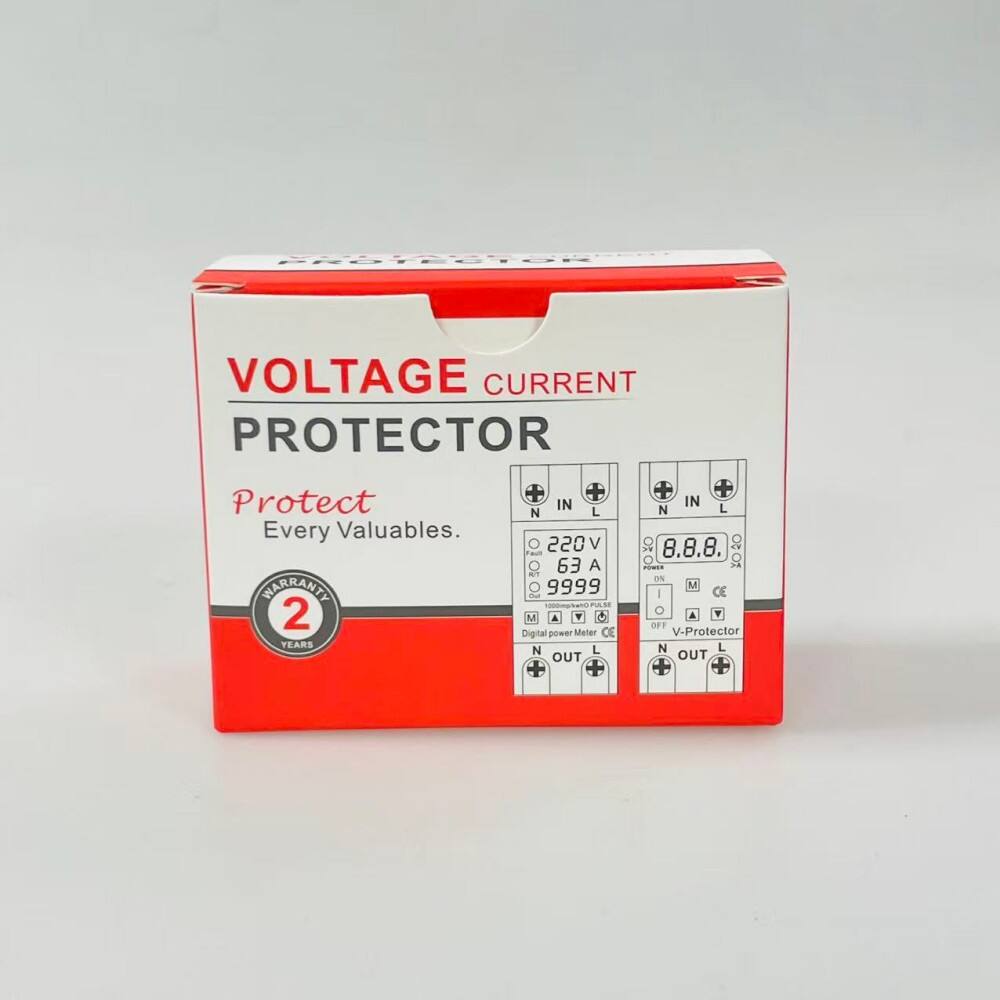Protecting your valuable electronic devices and appliances has become increasingly critical in today's connected homes. With kitchens filled with smart appliances and living rooms hosting entertainment centers worth thousands of dollars, a volt surge protector serves as your first line of defense against potentially devastating power fluctuations. Whether you're safeguarding your expensive refrigerator or protecting your home theater system, choosing the right surge protection solution requires careful consideration of several key factors.
Modern homes typically contain more sensitive electronics than ever before, from smart coffee makers to sophisticated sound systems. These devices represent significant investments and store invaluable data, making proper surge protection not just an option, but a necessity. Let's explore how to select the ideal volt surge protector for your kitchen and living room spaces, ensuring your electronics remain safe and functional for years to come.
When selecting a volt surge protector, the joule rating stands as one of the most crucial specifications to consider. This rating indicates how much energy the device can absorb before failing. For kitchen appliances and living room electronics, look for surge protectors with a minimum rating of 2,000 joules. High-end entertainment systems and valuable kitchen equipment deserve even better protection, so consider models offering 3,000 joules or more.
The protection level also encompasses the clamping voltage, which determines how much voltage can pass through to your devices before the surge protector activates. Lower clamping voltage ratings provide better protection. For home use, seek out surge protectors with clamping voltages between 330V to 400V to ensure optimal safeguarding of your electronics.
The speed at which a volt surge protector responds to power fluctuations can mean the difference between protected devices and damaged electronics. Look for units with response times under one nanosecond. This ensures that your equipment receives protection from even the briefest power surges.
Additionally, verify that any surge protector you consider carries proper safety certifications. UL 1449 certification represents the minimum standard for surge protective devices. Products with this certification have undergone rigorous testing to ensure they meet safety requirements and perform as advertised.
Kitchens present unique challenges for surge protection. The presence of water, heat, and heavy-duty appliances necessitates specific features in a volt surge protector. Look for models with weather-resistant housing and properly spaced outlets to accommodate bulky transformer plugs from kitchen appliances. Some advanced models even include specific outlets optimized for refrigerators and other major appliances.
Consider surge protectors with LED indicators that clearly show protection status, as kitchen installations often place these devices in less visible locations. Additionally, units with cord lengths of at least 6 feet provide flexibility in placement, ensuring you can position the surge protector optimally while still reaching distant outlets.
Living room setups typically involve more sophisticated electronics with varied power requirements. Choose a volt surge protector that offers both standard and widely-spaced outlets to accommodate various plug sizes. For home theater systems, consider models with coaxial cable and ethernet protection to safeguard against surges through these additional pathways.
Many modern surge protectors designed for living spaces include USB ports for charging mobile devices. While convenient, ensure these features don't compromise the unit's primary surge protection capabilities. Look for models with EMI/RFI noise filtering to maintain clean power delivery to sensitive audio and video equipment.

The latest volt surge protector models offer smart home compatibility, allowing for remote monitoring and control through smartphone apps. These advanced units can send notifications when surge events occur or when protection capacity diminishes. Some can even integrate with home automation systems to provide scheduled power management for connected devices.
Smart features might include energy monitoring capabilities, helping you track power consumption and identify energy-hungry devices. While these features add cost, they provide valuable insights into your home's electrical system and can help prevent potential issues before they become problems.
Modern surge protectors increasingly incorporate automatic shutdown features that disconnect power when protection capacity is exhausted. This crucial safety feature prevents damage to connected devices when the surge protector can no longer provide adequate protection. Look for models with clear indicators showing both protection status and remaining capacity.
Some advanced units also include thermal protection, automatically cutting power if internal components overheat. This additional safety layer proves particularly valuable in kitchen environments where ambient temperatures can rise significantly during cooking activities.
The effectiveness of a volt surge protector largely depends on its installation location. In kitchens, mount surge protectors where they remain easily accessible but protected from water splashes and extreme heat. For living rooms, consider cable management features that help maintain a clean, organized appearance while ensuring all devices receive protection.
Avoid daisy-chaining multiple surge protectors, as this can compromise protection effectiveness and create potential safety hazards. Instead, plan your device layout to utilize single, high-quality surge protectors strategically placed near device clusters.
Even the best volt surge protector requires periodic attention to maintain optimal protection. Establish a regular schedule to check indicator lights and test protection status. Most quality surge protectors include test buttons for this purpose. Replace units showing signs of wear or those that have absorbed significant surges.
Keep surge protectors clean and free from dust, particularly in kitchen environments where grease and food particles can accumulate. Regular cleaning helps prevent potential fire hazards and ensures proper heat dissipation during operation.
Replace your volt surge protector every 3-5 years under normal conditions, or sooner if it shows signs of damage or has absorbed major power surges. Regular testing and monitoring of indicator lights can help determine when replacement becomes necessary.
While technically possible, it's recommended to use surge protectors specifically designed for each space. Kitchen models typically offer better moisture resistance and spacing for appliance plugs, while living room models focus on entertainment system protection and aesthetic features.
A power strip simply multiplies outlet availability without providing protection against power surges. A volt surge protector includes specialized circuitry to absorb excess voltage and protect connected devices from electrical damage. Always verify you're purchasing a true surge protector rather than a basic power strip.